It all started with a friendship and a sewing challenge. Toni Duchi and I have been friends for over 30 years. We first met while we were both employed by the University in the College of Education and that friendship has been steadfast through the years as we each pursued our goals.
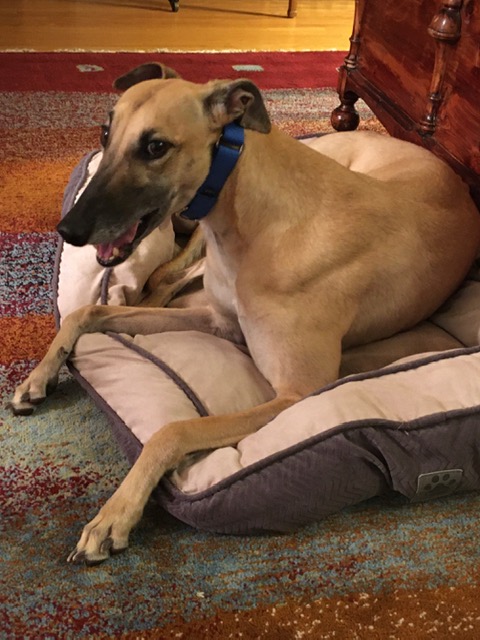
Toni’s passion was always for the fate of the many retired racing hounds who needed homes. Her involvement was as much for the dogs as for the interested adopters who wanted some guidance in understanding the needs of these gentle hounds.
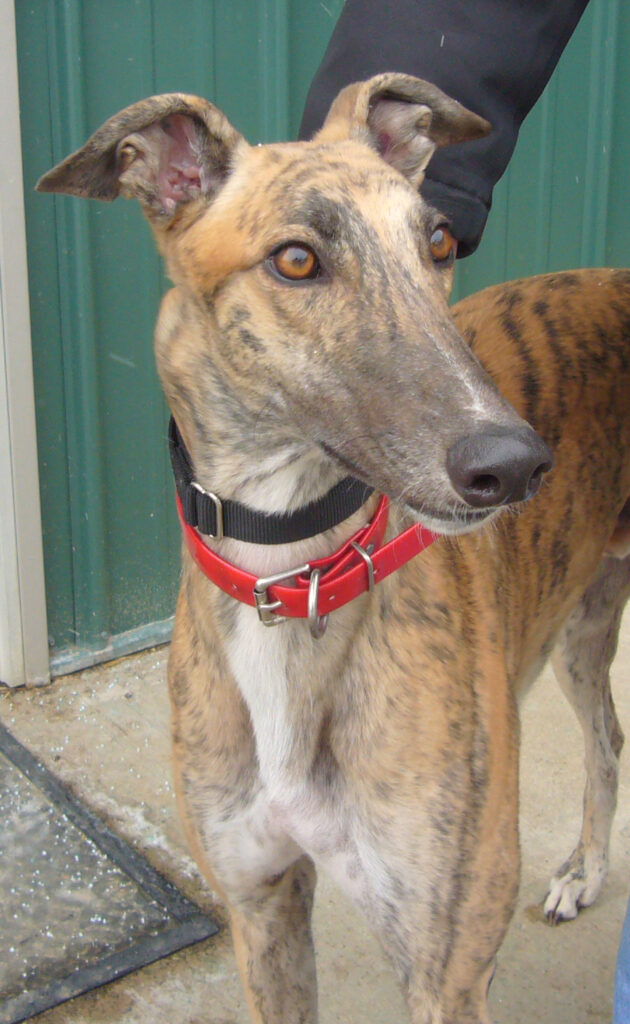
Toni was instrumental in helping Nittany Greyhounds expand from foster homes to a non-profit organization with a dedicated kennel. I watched her dreams come true and to-date Nittany Greyhounds have found forever homes for more that 1900 greyhounds. Very impressive and a lot of work! Check out their website: https://www.nittanygreys.org
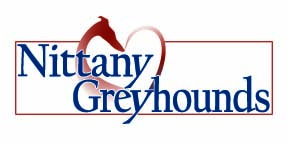
My involvement with Nittany Greyhounds was subtle at first. I may not have a greyhound but I’ve always enjoyed a sewing challenge. Twenty years ago I was asked to make coats for the newly arrived dogs, based on a coat being used at the kennel. There was no pattern as such and obviously an ordinary commercial dog coat pattern wouldn’t work.
Thus began my introduction to greyhounds! With an initial attempt at tracing around a coat, I made many coats. Every few batches, Toni would suggest a way we could make them better for the dogs. Translating suggestions into pattern changes has been ongoing for at least 20 years! Toni was able to see how the coats actually worked when the dogs ran hard and then watched how they fit when the dogs curled into a cozy ball for a nap. Interpreting these needed changes to actual pattern changes was fun and a real challenge, especially since I do not have a greyhound at home to use as a model.

By now, I’m pretty confident we’ve designed a coat that meets the needs of the dogs…two sizes to accommodate the larger males and the smaller females; a coat that hangs down long enough to cover their rear end; a neck shape that can be folded down like a turtleneck and still unfold to provide cover for their sensitive ears on especially cold days.
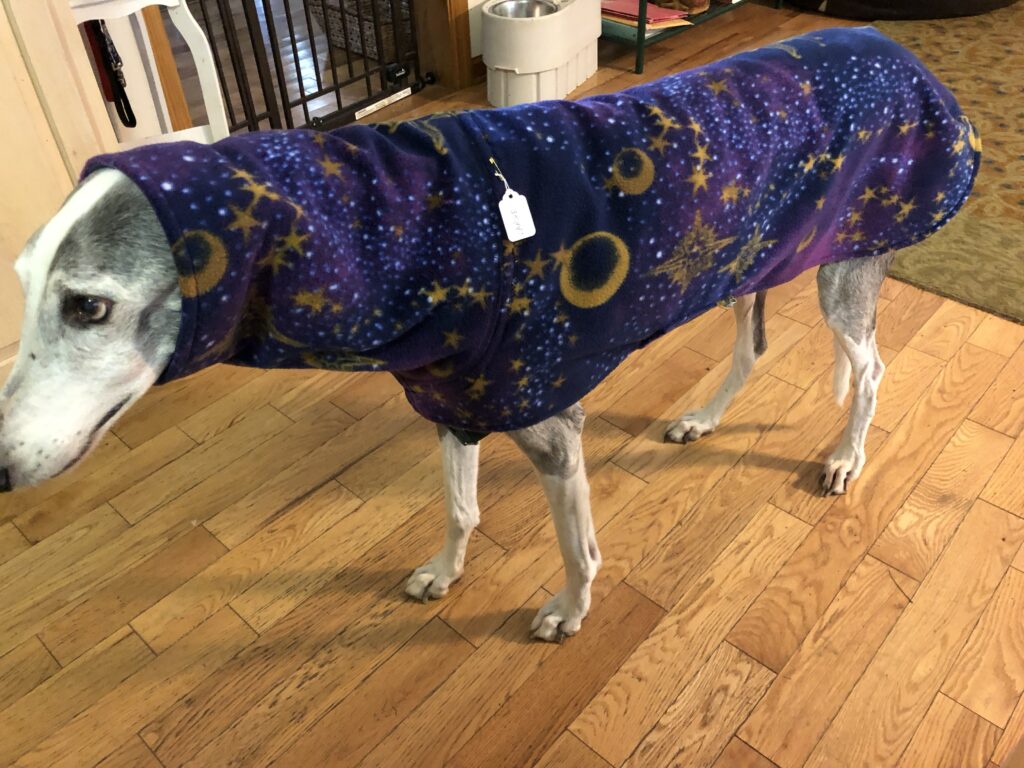
The latest changes involved increasing the width across the chest area so the coat is more comfortable when they lie down. Finally, I discovered two layers of fleece (rather than one of fleece and one of flannel) made the coat warmer but also made the whole coat more flexible as the dog moved. I could never have done this design work without Toni, who understood the needs of the dogs!
Some things I’ve learned about Greyhounds
While I did not need to know a lot about dealing with the breed while sewing coats, throughout my time working with Toni I have learned a lot about Greyhounds. Many of the dogs that have come to Nittany Greyhounds come from Florida. The weather is quite different here in Pennsylvania…especially in the winter! The coats have been a necessary part of caring for the dogs. They have thin coats and sensitive skin. They are low to average shedders, but the lack of a heavy coat leaves their skin vulnerable to scrapes, tears and nicks. Many dogs new to the area are comfortable wearing a coat even indoors. In icy conditions some dogs will even tolerate booties to protect them from the snow, ice and salt-treated sidewalks. (I’ve decided to not expand my coat production into booties!)
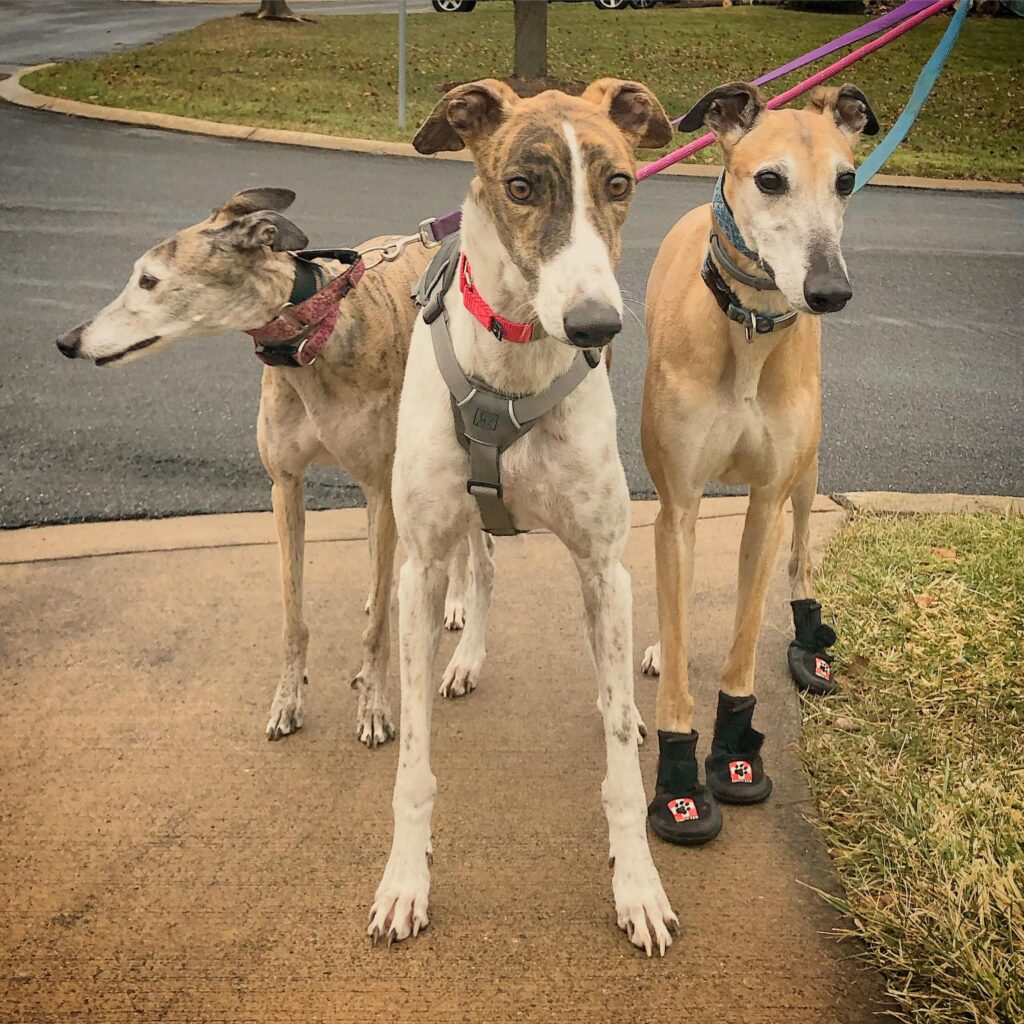
How are racing Greyhounds raised differently from other dogs?
If you were to adopt a greyhound as a puppy, I’m told he/she would be just like any other puppy. He would need training like any new puppy of any breed. Retired greyhounds come to adoption agencies after 2-3 years of a very different background. Greyhounds are pack animals and kept with their mothers and raised as a pack, comprised of their litter mates and/or other greyhounds their age. Once they begin their racing careers, they are kept on a program of vigorous exercise, training, handling and grooming. They are kept busy, and at all times, share their lives with their pack members.
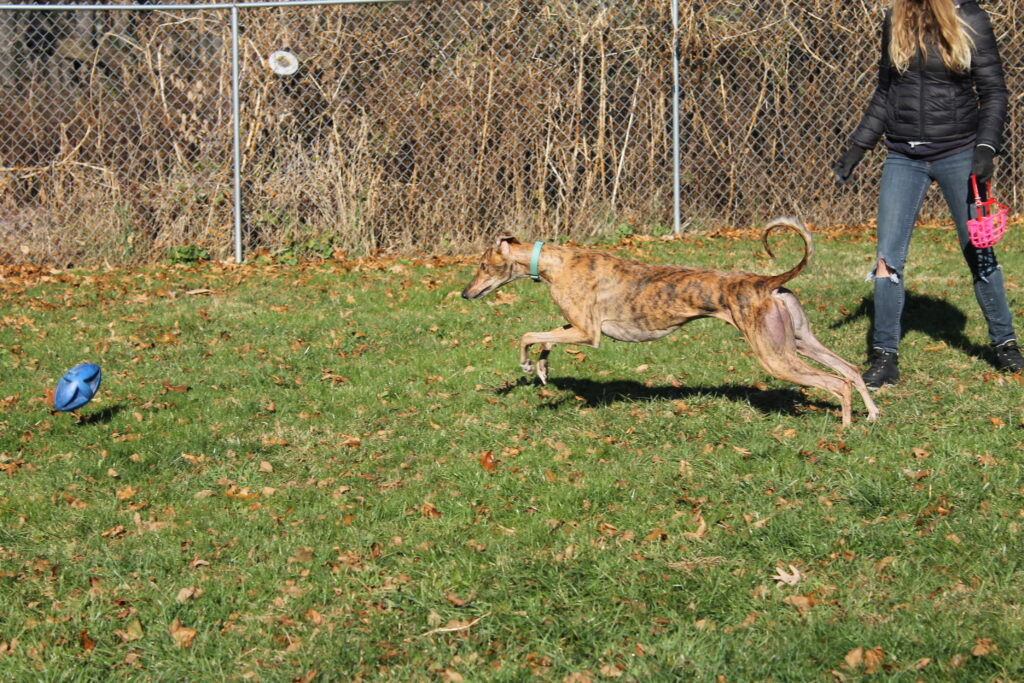
Their down time is enjoyed as true rest from vigorous activity. Much of this downtime is spent in a large crate. It feels safe because in the crate they are not touched by strangers. They are fed on a strict schedule. No one asks them if they are hungry or what they want to eat. The dogs are never asked if they need to “go outside.” Their interactions are with their pack, not necessarily their keepers.
When a greyhound is adopted they are suddenly expected to be a “civilized person in a fur coat.” Some of them don’t even know their names, because they were not used. Suddenly, they are expected to behave in places they have never been taught how to act. They are expected to take responsibility for saying when they need to go outside, to come when called, not to get on the furniture, and not to eat food off counters and tables.
A newly adopted greyhound may need help learning how to navigate stairs, tile or hardwood floors, and glass doors. They are also facing this new environment alone, instead of with a pack of other dogs. Understanding these issues is critical for new adopters. It is no wonder many adopters find their dogs are happier when there are several greyhounds in the family. They’ve been given a pack to hang out with.
And finally…for your next Trivia challenge, a group of greyhounds is called a “leash” or sometimes a “brace.”
Thanks for letting me share my adventures with Greyhounds. If you’d like to chat about this post, send me an email at maryjkisner@gmail.com .
